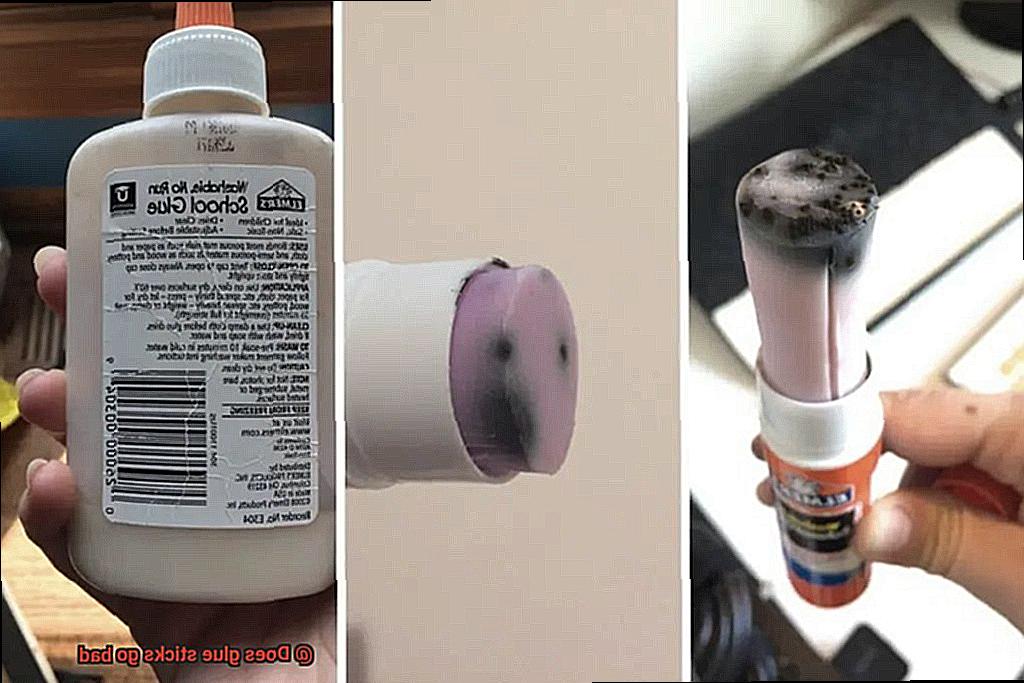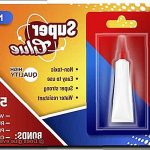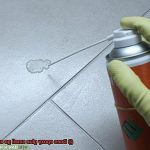Have you ever found yourself staring at an old glue stick and wondering if it’s still good to use? We’ve all been there, holding onto those trusty adhesive devices that have been sitting in our drawers for ages. But the question remains: does glue sticks go bad?
As an expert on all things adhesive, I’m here to put your mind at ease and answer this burning question. Whether you’re a crafting connoisseur or just someone who occasionally needs to stick something together, knowing the shelf life of your glue sticks is crucial.
In this post, we’ll dive deep into the world of glue sticks and explore whether or not they expire. We’ll also provide some tips on how to determine if your glue stick is still usable and how to properly store them so they stay fresh for longer.
So come along with me on this journey of discovery as we uncover everything you need to know about the lifespan of glue sticks. Let’s make sure your projects are always sticking together flawlessly.
What is a Glue Stick?
Contents
- 1 What is a Glue Stick?
- 2 Types of Glue Sticks
- 3 How Does Shelf Life Affect Glue Sticks?
- 4 Factors That Determine Whether a Glue Stick Goes Bad
- 5 Natural Adhesives and Their Shorter Shelf Life
- 6 Storage Conditions for Glue Sticks
- 7 Frequency of Use and Its Impact on the Longevity of Glue Sticks
- 8 Conclusion
Enter the glue stick – a solid adhesive tool that has become a staple in households, schools, and offices around the world. But what exactly is a glue stick, and how does it work?

A glue stick is a combination of synthetic polymers and natural substances such as wax, resin, and oils. The twist-up mechanism design of the glue stick allows for easy application onto surfaces without the mess of traditional liquid adhesives. Glue sticks are versatile and can be used on various materials such as paper, cardboard, foam board, and even fabric. They are also convenient to use and dry quickly, making them a popular choice for many people.
The invention of the first glue stick can be traced back to 1969 when German inventor Wolfgang Dierichs introduced this revolutionary adhesive tool to the world. Since then, glue sticks have become essential for those who need to stick things together effortlessly.
But do glue sticks go bad over time? The answer is yes. Several factors can affect the shelf life of a glue stick, such as the type of adhesive used in making the glue stick and storage conditions. It is essential to store glue sticks in a cool and dry place away from direct sunlight and heat sources to avoid melting or drying out. Additionally, regular use of glue sticks can prevent them from drying out or losing their stickiness quickly.
Types of Glue Sticks
A glue stick is a handy tool that can help you create a wide range of projects, from school assignments to DIY decorations. However, with so many types of glue sticks available, how can you choose the right one for your project? In this post, we’ll explore five different types of glue sticks and their uses to help you make an informed decision.
Standard Glue Sticks
Standard glue sticks are the most versatile option and can be used for most materials, including paper, cardboard, and fabrics. They dry clear and provide a permanent bond. These glue sticks are perfect for everyday crafting, scrapbooking, and school projects.
High-Temperature Glue Sticks
If you need a stronger bond for heavy-duty materials such as wood, metal, and plastic, high-temperature glue sticks are the way to go. They require a high-temperature glue gun to melt them and provide a more durable bond. These glue sticks are perfect for home repairs or larger DIY projects.
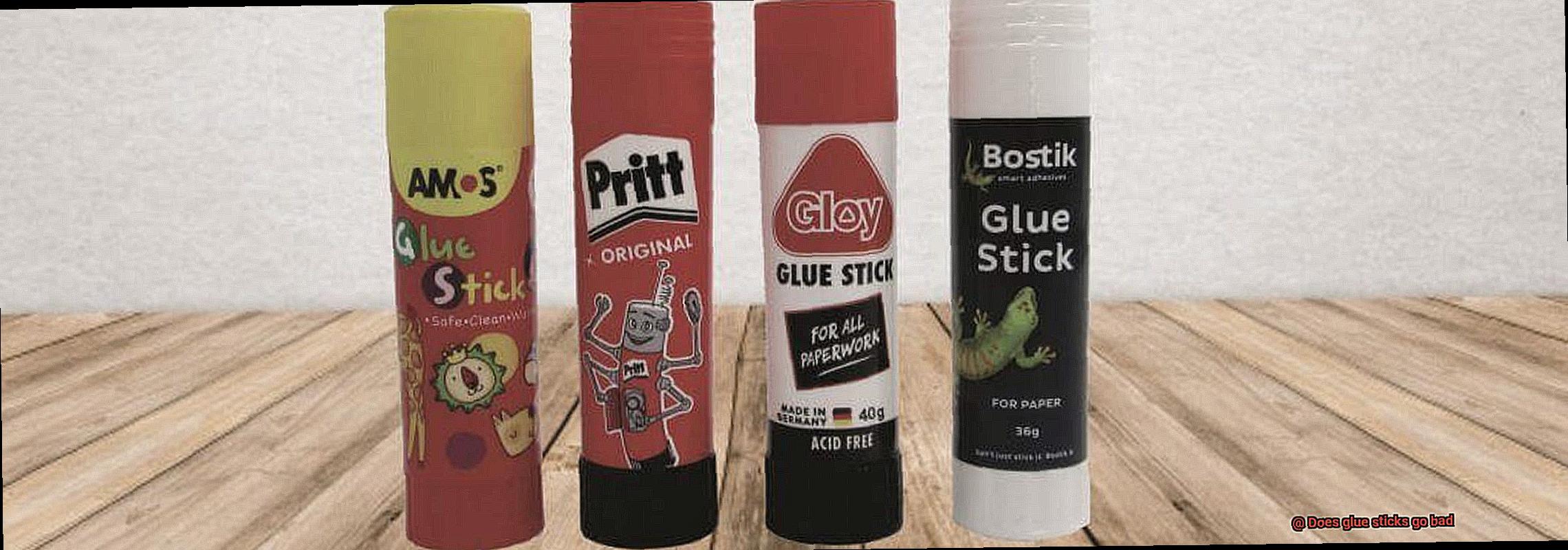
Low-Temperature Glue Sticks
For delicate materials that may melt or deform under high temperatures, such as foam and ribbon, low-temperature glue sticks are the best option. They require a low-temperature glue gun to melt them and provide a gentle bond. These glue sticks are great for kids’ crafts or other projects that involve sensitive materials.
Colored Glue Sticks
Add some color to your projects with colored glue sticks. These glue sticks come in different colors and are suitable for crafts and decorations. They dry in the same color as they appear in the stick, making them perfect for adding some flair to your projects.
Glitter Glue Sticks
For an extra touch of sparkle, glitter glue sticks are the perfect choice. These glue sticks contain glitter and are suitable for adding shine to decorations and other projects. They’re perfect for kids’ crafts or adding some glam to your DIY projects.
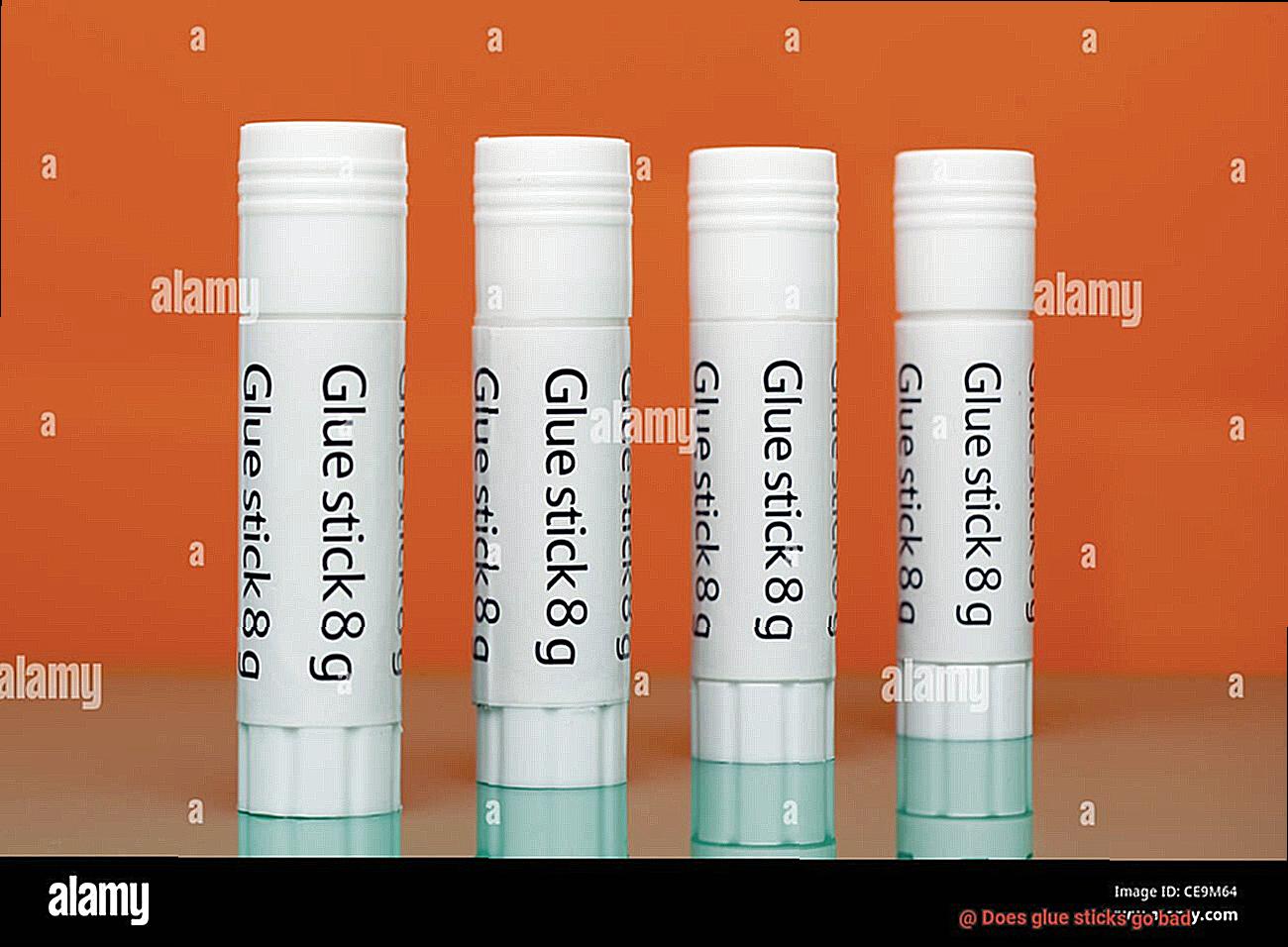
It’s important to note that each glue stick is formulated for specific purposes. Therefore, it’s crucial to check the packaging of the glue stick before purchasing it to ensure that it is suitable for the intended use. Additionally, it’s essential to store glue sticks properly to ensure their longevity. Store them in a cool, dry place away from direct sunlight and heat sources. If stored correctly, glue sticks can last up to two years without going bad.
How Does Shelf Life Affect Glue Sticks?
If you’re a crafter who likes to keep a stash of glue sticks on hand, it’s crucial to understand how shelf life can affect the adhesive properties and overall effectiveness of your glue sticks. Shelf life refers to the time period during which a product can be stored without any noticeable deterioration in quality or performance. For glue sticks, this period typically ranges from one to two years, depending on the brand and type.
But why does shelf life matter for glue sticks? The answer lies in their composition. Glue sticks are made up of a combination of synthetic polymers and waxes that create a solid stick form. Over time, these components can break down, causing the glue stick to lose its adhesive strength and become discolored or brittle.
To extend the shelf life of your glue sticks, it’s important to store them in optimal conditions. Keep them in a cool, dry place away from direct sunlight and heat, as exposure to high temperatures or humidity can accelerate the breakdown process. Avoid storing them in damp basements or attics, which can cause moisture buildup and lead to mold growth.
Regularly checking your glue sticks for signs of deterioration is also key. Look for discoloration or loss of adhesive strength, as these are indications that the glue stick has exceeded its shelf life. If you notice any of these signs, it’s best to replace the glue stick rather than trying to use it for your projects.
Factors That Determine Whether a Glue Stick Goes Bad
These factors are essential to understand to ensure that your glue stick is effective and safe to use.
One of the primary factors that determine whether a glue stick goes bad is exposure to air and moisture. When a glue stick dries out due to air and moisture exposure, it becomes less effective at bonding materials. To prevent this, store your glue sticks in a cool and dry place.
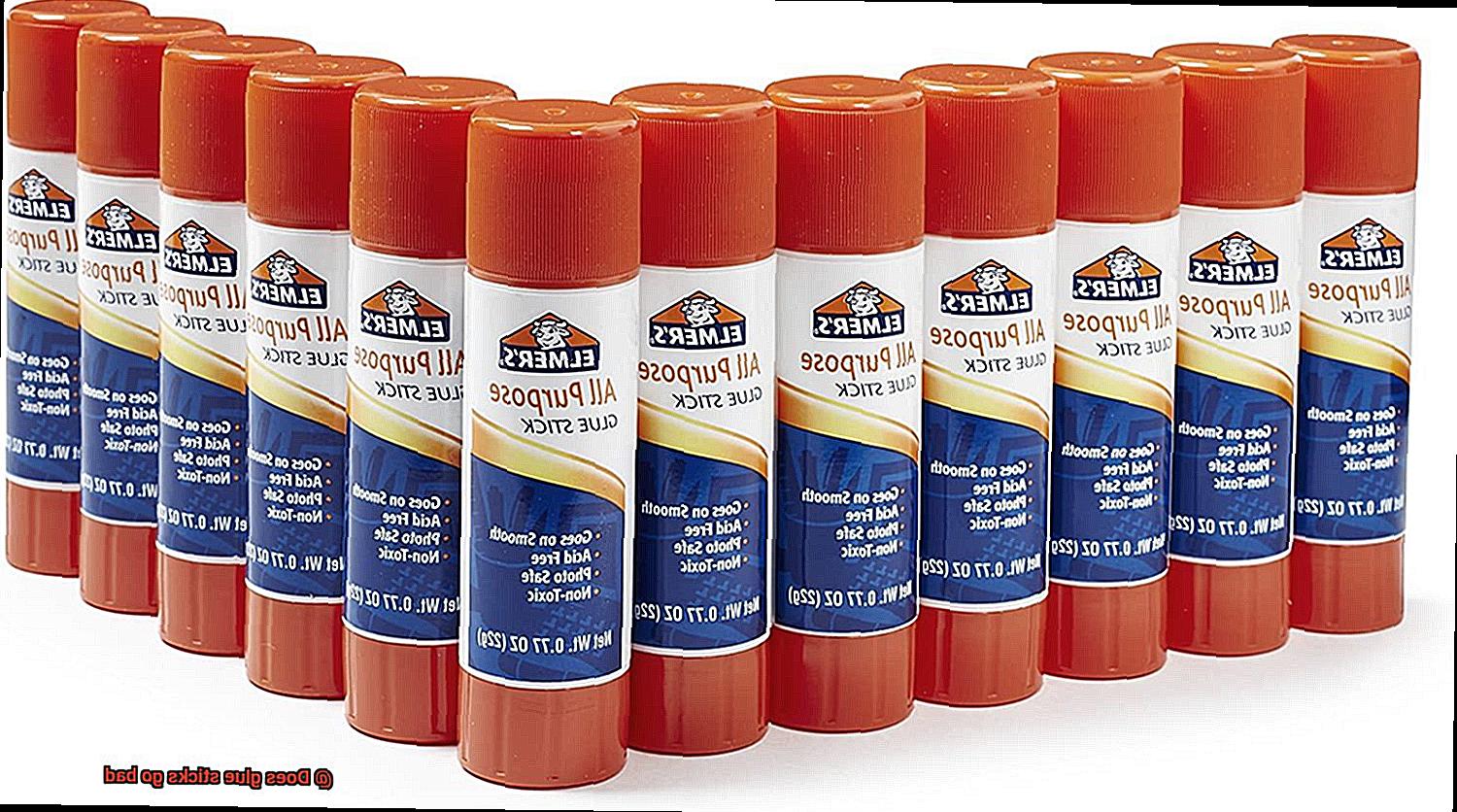
Temperature also plays a significant role in determining whether a glue stick goes bad. High temperatures can cause the adhesive to melt, while low temperatures can make it brittle and less sticky. It is recommended to store your glue sticks at room temperature.
The type of materials being bonded is another factor that determines whether a glue stick goes bad. Different types of glue sticks are designed for specific materials, such as paper, fabric, or plastic. Using the wrong type of glue stick on a material may not bond effectively, causing it to fail over time.
Lastly, the age of the glue stick can also determine whether it has gone bad. Most glue sticks have a shelf life of around two years. If your glue stick is past its expiration date, it may not work effectively or could even become unsafe to use.
In summary, the factors that determine whether a glue stick goes bad are exposure to air and moisture, temperature, the type of materials being bonded, and the age of the glue stick. By understanding these factors, you can store and use your glue sticks effectively.
Natural Adhesives and Their Shorter Shelf Life
You may already be familiar with natural adhesives. These adhesives are made from organic materials such as plant starch, animal hide, or tree sap and offer a great alternative to commercial synthetic glue.
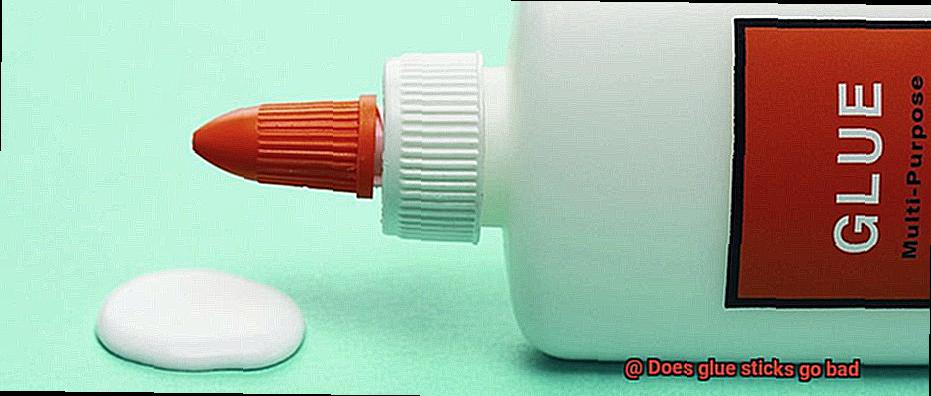
However, one thing that sets natural adhesives apart from their synthetic counterparts is their shorter shelf life. Unlike synthetic adhesives, natural adhesives can deteriorate over time and lose their effectiveness. This is because they are made from organic materials that can spoil if not stored properly.
So why do natural adhesives have a shorter shelf life?
Firstly, let’s take a closer look at what natural adhesives are made of. As the name suggests, they are made from natural substances such as plant starch, animal hide, or tree sap. These materials are processed and turned into a sticky substance that can be used for various applications.
However, the organic nature of these materials makes them susceptible to deterioration. Factors such as temperature and moisture can speed up this process and cause the adhesive to spoil. This means that the shelf life of natural adhesives can vary depending on the type of material used and how it was processed.
For instance, animal hide glue has a shelf life of about six months to a year if stored properly in a cool, dry place. On the other hand, plant-based adhesives like wheat paste or rice glue may only last a few weeks before they start to spoil.
In addition to their shorter shelf life, natural adhesives may also have limitations in terms of strength and durability. They may not be able to withstand extreme temperatures or moisture, which can cause them to break down or lose their grip over time.
Despite these limitations, natural adhesives are still an excellent option for those who prefer eco-friendly and sustainable alternatives. Proper storage and careful consideration of their intended use can help ensure their effectiveness and longevity.
Storage Conditions for Glue Sticks
To start, temperature plays a major role in preserving your glue sticks. It is crucial to keep them in a cool and dry environment with a storage temperature between 60-80°F (15-27°C). Direct sunlight, heat sources, and moisture can cause the glue to melt or dry out, rendering it unusable.
So, avoid leaving your glue sticks in your hot car or near windows where they can be exposed to sunlight and store them in a cupboard or drawer instead.
Moisture is another factor that can impact the effectiveness of glue sticks. If they are stored in damp areas, they can become brittle and break easily when used. Therefore, it is essential to keep them in a dry place.
To prevent your glue sticks from drying out, it’s recommended that you store them in their original packaging or airtight containers. This will prevent air from entering the tube and drying out the glue. Additionally, after each use, make sure to twist the cap tightly and store them vertically with the cap facing down. This will further prevent air from entering the tube and drying out the glue.
In summary, proper storage conditions for glue sticks are critical for maintaining their effectiveness and longevity. Here are some quick tips to follow:
- Store glue sticks in a cool and dry place with a temperature between 60-80°F (15-27°C).
- Keep them away from direct sunlight, heat sources, and moisture.
- Store them in their original packaging or airtight containers to prevent air from entering the tube and drying out the glue.
- Twist the cap tightly after each use and store them vertically with the cap facing down to further prevent air from entering the tube.

Frequency of Use and Its Impact on the Longevity of Glue Sticks
The frequency of use is undoubtedly a critical factor in determining the longevity of glue sticks. However, there are other factors to consider that can impact the lifespan of these handy tools.
To ensure your glue stick lasts as long as possible, it’s essential to store it properly when not in use. Failing to do so can cause air to dry out the glue and render it ineffective over time. Humidity and heat can also have a detrimental effect, causing the glue stick to soften or even melt away.
To prevent this from happening, store your glue stick in its original packaging or airtight containers, keep it cool and dry, twist the cap tightly after every use, and store it vertically with the cap facing down.
The quality of your glue stick is also an essential factor to consider when determining its longevity. Cheaper alternatives may not last as long as higher quality glue sticks, which are formulated with better ingredients to ensure they last longer. So, investing in a good quality glue stick is worth considering if you plan on using it frequently.
While there is no set timeframe for how long a glue stick will last due to varying factors such as frequency of use and storage conditions, with proper care and attention, a good quality glue stick should last for several months or even up to a year. Remember, proper storage and investing in a high-quality product are key to maximizing the lifespan of your trusty glue stick.
Conclusion
In conclusion, the answer to the question “Do glue sticks go bad?” is yes. Various factors such as air exposure, moisture, temperature, material bonding, and the age of the glue stick can cause it to deteriorate over time. It’s crucial to store them in a cool and dry place away from direct sunlight and heat sources to prevent melting or drying out.
To ensure that you get the most out of your glue stick, it’s essential to use them regularly. This helps prevent them from drying out or losing their adhesive strength quickly. Additionally, there are different types of glue sticks available in the market formulated for specific purposes. Checking the packaging before purchasing ensures that it is suitable for your intended use.
The shelf life of glue sticks is around two years if stored correctly. However, natural adhesives made from organic materials such as plant starch or tree sap offer an eco-friendly alternative but have a shorter shelf life than synthetic adhesives due to their susceptibility to deterioration.
Proper storage conditions for glue sticks include keeping them in their original packaging or airtight containers, twisting the cap tightly after each use and storing them vertically with the cap facing down. The frequency of use also impacts their longevity.
Investing in high-quality glue sticks is worth considering if you plan on using them frequently.

